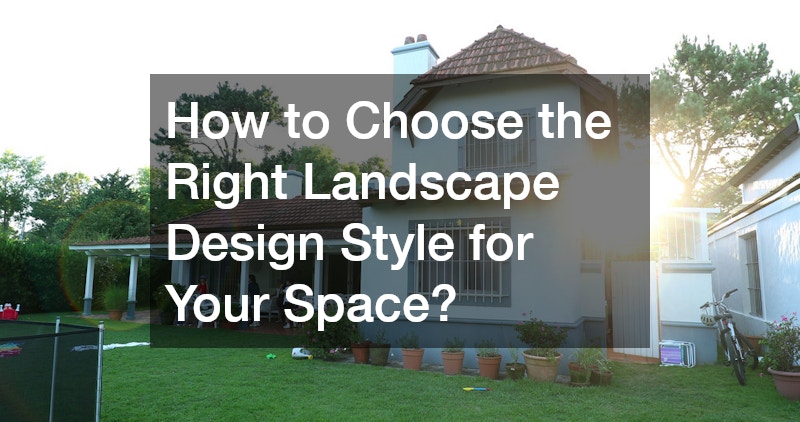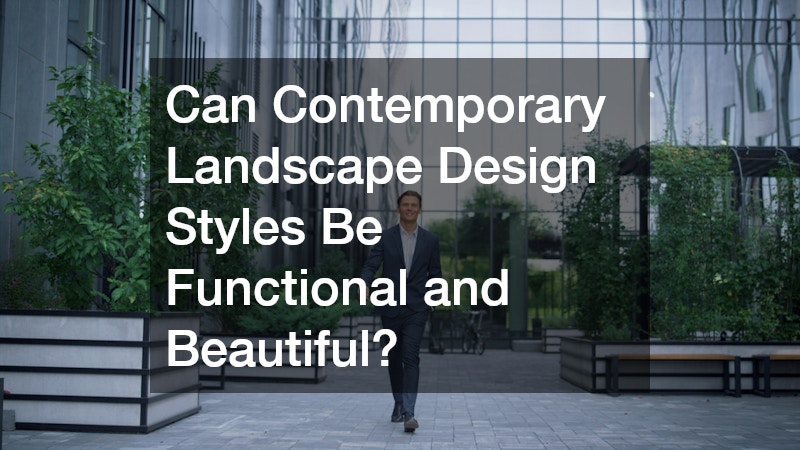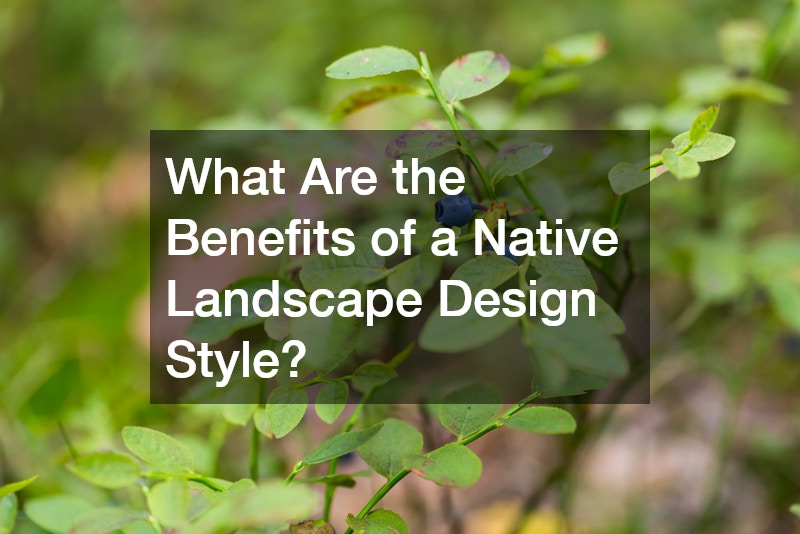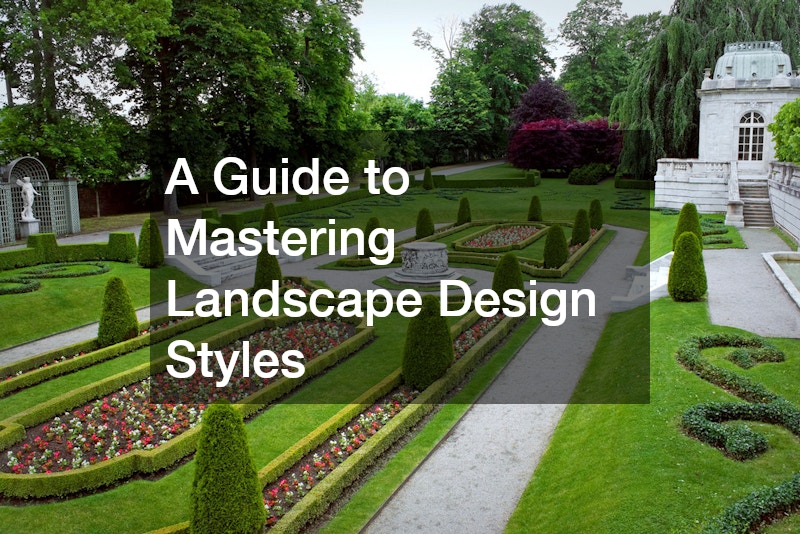Incorporating Different Landscape Styles for Your Dream Backyard
In this comprehensive guide, we delve into the fascinating world of landscaping. Whether you’re an aspiring designer or simply passionate about transforming outdoor spaces, understanding various design styles can be instrumental in crafting breathtaking landscapes. Each section of this guide addresses common questions and topics to enhance your knowledge and inspire you in mastering landscape design. We aim to provide both foundational insights and practical examples, giving you the confidence to apply these styles in real-world settings. With a thoughtful blend of aesthetics and functionality, your dream backyard can come to life, no matter the size or scope of your space.
What Are the Most Popular Landscape Design Styles?
The world of landscape design styles is rich and varied, offering a wide range of options to suit every taste and environment. From traditional English garden designs with their lush plantings and wood fences to the minimalistic lines and serene elements found in Japanese landscape design, there is something for everyone. Efficient gardening techniques tie into these styles, ensuring that the selected plants thrive while consuming minimal resources. Many of these designs also reflect cultural values and historic influences, giving each one a unique identity and visual language.
Contemporary design styles are gaining popularity due to their blend of beauty and functionality. Using elements like sustainable materials and native plantings, these styles merge modern aesthetics with practical considerations. By studying different landscapes, you can gain insights into integrating features like sustainable lawn fertilization to create a harmonious and efficient outdoor space. These approaches often incorporate smart technology, recycled materials, and climate-sensitive planting to build landscapes that are not only stunning but also environmentally conscious and easier to maintain.
Some of the most sought-after styles include the Mediterranean style with its vibrant colors and earthy textures, and the sustainable landscape approach that promotes environmental responsibility. Each style incorporates unique elements that can transform any outdoor space into a personal paradise. Understanding these styles at a fundamental level can help in making informed choices for your landscape projects.
How to Choose the Right Landscape Design Style for Your Space?

Choosing the right landscape design style for your space involves evaluating both your aesthetic preferences and practical needs. Consider factors like climate, topography, and the existing features of your space, such as gutters and awnings. Each of these elements plays a crucial role in the overall design and functionality of your landscape. For example, a sloped yard may benefit from terracing or tiered plant beds, while a flat area might allow for expansive lawns or minimalist stone pathways. Local climate conditions also dictate plant choices, ensuring your landscape will thrive with minimal intervention.
Beyond aesthetic considerations, practical aspects such as water usage, maintenance requirements, and durability should guide your style selection. If lawn fertilization is essential in your region, then styles that incorporate drought-resistant plants or efficient watering systems can be beneficial. This approach ensures that your design is not only beautiful but sustainable in the long term. Also consider your lifestyle and how much time you can dedicate to upkeep—certain styles require more hands-on attention, while others are better suited to low-maintenance routines that align with a busy schedule.
Visit a local hardware store for inspiration and advice on materials that can help bring your vision to life. Whether you’re drawn to a more traditional style or a contemporary one, having a clear understanding of your space and desires will make your design journey more rewarding. Selecting the right landscape design style is about creating an outdoor area that reflects your personality and meets your practical needs. Collaborating with a professional designer or using design software can also help you visualize your plans and avoid costly mistakes. Ultimately, the right style will balance form and function, turning your outdoor space into an extension of your home and a place you love to spend time in.
What Are the Key Elements of English Landscape Design Style?
English landscape design style is renowned for its lush greenery, romantic plantings, and classic elements such as wood fences. This style emphasizes creating naturalistic, pastoral scenes with elegant garden features. The use of perennial borders and sweeping lawns epitomizes the serene, inviting allure of English gardens.
Paths made of gravel or stone meander through vibrant flower beds and expansive lawns, offering leisurely strolls through cultivated beauty. The integration of focal points, such as classic sculptures or tranquil water features, helps create an aesthetic balance. This attention to harmonious design elements is a hallmark of landscape design styles focused on creating immersive experiences.
For those seeking to integrate English landscape design style into their gardens, considering the practical aspects like lawn fertilization and maintenance is essential. The choice of plants that thrive in local conditions while maintaining the lush aesthetic is critical. The thoughtful combination of style and practicality ensures that the garden remains a timeless oasis.
How to Incorporate Japanese Landscape Design Style in Your Garden?

Incorporating Japanese landscape design styles involves understanding the principles of harmony, simplicity, and balance. These gardens often include elements like water features, stones, and carefully pruned trees that symbolize tranquility and the natural beauty of the landscape. Each component serves a specific purpose, contributing to the overall zen aesthetic.
Key to Japanese landscape design is the concept of borrowed scenery, where the surrounding environment is incorporated into the garden’s design. This concept blurs the line between the garden and the larger landscape, offering a serene, immersive experience. Gutters and pathways are designed to blend seamlessly with their surroundings, enhancing the garden’s naturalistic appeal.
To create a Japanese-inspired garden, consider utilizing native plants and materials that emphasize simplicity and minimalism. This approach not only aligns with efficient gardening practices but also minimizes maintenance needs. By focusing on form and function, you can create a calming and reflective outdoor space that embodies the philosophy of Japanese landscape design.
What Makes Mediterranean Landscape Design Style Unique?
The Mediterranean landscape design style is characterized by its warm, inviting atmosphere and vibrant aesthetic. Common features include terracotta patios, stone walkways, and lush plantings that create a sense of abundance and leisure. This style embraces the use of lumber and other natural materials to enhance its rustic charm.
One of the defining aspects of Mediterranean design is its use of a warm color palette and hardy drought-resistant plants. These design elements not only capture the essence of the Mediterranean region but also promote efficient gardening practices by reducing water usage. The combination of beauty and practicality makes this style ideal for regions with similar climates.
To incorporate Mediterranean landscape design into your space, focus on integrating plants like rosemary, lavender, and olive trees that thrive in sunny environments. The use of bold, colorful pottery and functional outdoor furnishings further enhances the aesthetic appeal. With its unique blend of casual elegance and practicality, the Mediterranean style offers a distinct approach to landscape design.
Can Contemporary Landscape Design Styles Be Functional and Beautiful?

Contemporary landscape design styles are defined by their clean lines, innovative use of space, and integration of modern materials. These designs prioritize functionality while delivering striking visual appeal. Asphalt paving and other sleek materials are commonly used to create a sophisticated, modern aesthetic.
Functionality is a cornerstone of contemporary landscape design, with an emphasis on creating adaptable spaces that serve multiple purposes. This may include incorporating features like built-in seating or integrated lighting systems that enhance usability without compromising on style. The balance between beauty and utility is key to achieving successful modern landscapes.
Sustainability is also a crucial consideration in contemporary landscape design, with an emphasis on eco-friendly practices and materials. The use of native plants and efficient irrigation systems can significantly reduce maintenance needs and environmental impact. By embracing innovation and sustainability, contemporary landscape design offers a path to creating stunning, functional outdoor spaces.
How to Achieve a Sustainable Landscape Design Style?
A sustainable landscape design style focuses on creating eco-friendly outdoor spaces that harmonize with the natural environment. This involves selecting native plants that require minimal water and maintenance, as well as incorporating elements like rain gardens and permeable paving. These features promote efficient gardening and conservation of resources.
Integrating technology, such as automated irrigation systems and solar lighting, can enhance the sustainability of your landscape design. These innovations not only reduce environmental impact but also increase convenience and efficiency. When properly implemented, a sustainable landscape design style improves the health of the ecosystem and decreases upkeep efforts.
Sustainable designs also consider the use of renewable materials and practices, such as incorporating recycled lumber and natural stone. Awnings and other shade structures can help manage temperatures and reduce energy consumption. By prioritizing sustainability, you contribute to long-term ecological balance and create a resilient, beautiful landscape.
What Are the Benefits of a Native Landscape Design Style?

Opting for a native landscape design style offers numerous ecological and aesthetic benefits. Native plants are well-suited to local soil, climate conditions, and regional wildlife, helping to create a stable, low-maintenance garden. This design style reduces the need for intensive maintenance tasks such as lawn fertilization and tree removal.
A native landscape design can also support pollinators and local wildlife by providing essential habitats and food sources, thereby promoting biodiversity. The use of native plants helps preserve the region’s natural heritage and fosters a sense of place. These attributes make the native landscape design style an environmentally responsible choice.
In addition to ecological benefits, a native landscape design style emphasizes the natural beauty of indigenous flora, offering a unique and regionally distinct aesthetic. This approach often results in a more harmonious integration with the surrounding environment. By embracing the diversity of native plants, landscape designers can craft beautiful, sustainable gardens that reflect the essence of their locale.
How Do You Combine Different Landscape Design Styles Successfully?
Combining different landscape design styles requires a thoughtful approach to ensure a cohesive and harmonious result. Begin by identifying the core elements and key features of each style you wish to incorporate, and consider how they can complement each other. This may involve integrating transition areas or focal points to bridge different styles seamlessly.
It’s crucial to maintain a consistent theme or color palette when merging various styles. This consistency helps unify the design and avoids a visually jarring effect. Utilize materials and elements with similar textures and tones to create a harmonious blend of styles, such as using wood fences to link traditional elements with more modern features.
Consulting with professionals or visiting a hardware store for advice and materials can provide valuable insights and resources for successfully combining styles. With careful planning, it’s possible to create a unique outdoor space that showcases your creativity and understanding of multiple design styles. This approach results in a personalized and engaging garden that reflects your tastes and the characteristics of each style.
What Are the Common Mistakes to Avoid in Landscape Design Styles?
Avoiding common mistakes in landscape design styles is crucial for creating successful outdoor spaces. One frequent error is failing to plan thoroughly, which can lead to mismatched elements and a lack of cohesion. Taking the time to sketch out your ideas and research different styles helps ensure that each component complements the overall design.
Overlooking the importance of regular maintenance can also compromise the effectiveness of your landscape. Tasks like pool maintenance, lawn care, and seasonal pruning should be factored into your plans from the outset. Proper maintenance helps preserve the beauty and functionality of your landscape, preventing costly interventions down the line.
Lastly, a common pitfall is neglecting to consider the long-term growth and development of plants within your design. Rapidly growing trees or poorly placed shrubs may eventually obstruct walkways or dominate the design. By anticipating these challenges and choosing appropriate plantings, you can maintain the integrity of your landscape over time.
Moving Forward With Landscape Design Styles
By examining these key topics, this guide aims to equip readers with the knowledge and inspiration needed to master landscape design styles. Understanding and applying these styles allows for personalized outdoor spaces. Exploring themes of sustainability, functionality, and aesthetics, this guide serves as a comprehensive resource for anyone looking to enhance their landscape design expertise.
